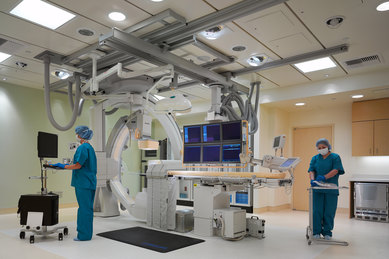The Facility Response to Health Reform
Kaiser Los Angeles Medical Center
As healthcare reform legislation extends medical insurance coverage to more Americans, the nation's healthcare system will be compelled to use resources more effectively. The use of bundled payments and shared savings models for medical treatment in lieu of the traditional fee-for-service model is motivating providers to eliminate wasteful practices. These new payment models, coupled with insurance and government programs that do not cover services necessitated by medical errors or adverse effects, are requiring a stronger-than-ever focus on care that is both high quality and highly efficient.
“Do more with less" is the current catchphrase; the question is, “How?" Healthcare facilities designed for quality and efficiency will be a large part of the answer. New designs will involve continued attention to micro-oriented solutions, such as patient safety and energy savings, as well as a more macro-oriented approach that entails redesigning the interface between an organization and its operations. Innovative solutions about where and how care is delivered will provide the best value in facility design moving forward.
Jim Hannon, former SmithGroup Health Practice Leader, outlines several strategies employed on recent projects to maximize quality and efficiency, as measured by immediate annual savings, compounded operational costs and long-term institutional flexibility. The designs respond to several ongoing trends advanced by healthcare reform, including health system integration, distributed care venues and departmental reorganization. Through the use of thoughtful planning and strong information technology, facilities are being designed with smaller building areas, optimized patient throughput, operational efficiencies and an improved experience for patients and staff.
